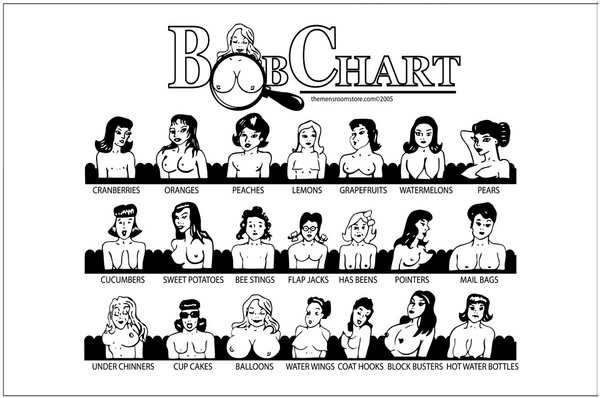Sex or sexual intercourse to be specific, is an essential part of our lifestyles be it simply for pleasure or for the continuation of mankind. What is highly intertwined with sex is the language used to express sexual attraction and desire which are natural processes of any sexual intercourse. For the longest time however, the aspects of sex were considered a taboo as a topic of discussion (Allan and Burridge, 2009). As a result, the language of sexual pleasuring and copulation had to be censored, but because the idea of explicitly talking about sex in the public domain seemed like such a ‘dangerous yet thrilling’ one, it being a taboo has kept language users constantly motivated to find ways to preserve yet violate it. Language users thus have to engage linguistic tools such as metaphors, euphemisms, dysphemisms and other figurative languages to enable them to talk about sex inexplicitly.
To understand how metaphors work in the realm of sex, we first have to understand the fundamental concepts of the Conceptual Metaphor Theory (CMT). Metaphors being ‘cross-domain mappings in the conceptual system’ (Lakoff, 1994) requires the linking of a domain (that has similar attributes to sex) to sex itself, so it can be mapped in a way that makes sense to its language users. What better way than to use food to construct these sex metaphors? As suggested by Elspeth Probyn (2000), ‘there is doubleness of food and sex’: both utilise our five senses; both arouse and appeal to our pleasure points with the release of the neurotransmitter, Dopamine, which causes desire and craving for repeated cycles of these two exercises; and biologically, both ensure survival — food for the individual and sex for the continuation of mankind. The process of eating food and the process of sexual intercourse itself is so similar that the basic metaphor Sex is Eating was formed. Linguistic metaphors can be branched out to be euphemistic or dysphemistic where the former would result in verbal mitigation whilst the latter is intended to offend. To consider how the two metaphors work, let’s look at some common language in popular culture music that combines both food and sex. Written below is part of the lyrics to a song sung by Ludacris and Trick Daddy.
Gimme some of your butter pecan, put it right here on the tip of my tongue
Butter pecan here is an example of how a metaphor can be euphemistic. It is an alternative to a body part of a female, which provides a socially acceptable way of dealing with the taboo of sex, or sexual foreplay in this case, in a public domain. It does not offend, it tones down the explicit mention of sexual genitalia while still maintaining the desired sexual overtures. Other metaphors like hotdogs for penises and oysters for vaginas are also alternatives that are considered less crude in the discourse of sex in public domains.
Remember, sex is not all just about physical sexual intercourse. A bulk of sex plays on how individuals express their desire and sexual attractions that all lead up to sex itself. Food-for-sex metaphors are thus a means for expressing lust and flirtation without supposedly being too obscene with one’s language. Metaphors do not thus only function as a solution to break free of taboos in public domains, but is an important aspect in sexual private domains. To understand how metaphors and sexual metonymy works, we have to acknowledge that a necessary and important facet of CMT (Lakoff & Johnson, 1980) is the interlocutors involved in the sexual exchange. This is because such representation of abstract concepts is a cognitive process that is subject to the individual roles of speaker and recipient. Essentially, the recipient could interpret the metaphor in ways which the speaker might or might not have meant to send across. The process of unravelling meanings of the utterance is important because it largely depends on the beliefs, social and cultural perspectives of the participants involved and their community (Fernández, 2008). In other words, social, cultural, racial norms – just to name a few – in societies influence the understanding and thus construction of food-for-sex metaphors, which ultimately influences the domains of sex listed earlier.
Within sexual intercourse, there exists an order of sexual roles. The use of linguistic metaphors and sexual metonymy of sex and food seem to construe some form of gender order within sex. If anything, speech practices that incorporate high frequencies of exchanges between food and sex not only further reinforces gender order, specifically males being more dominant than females, but also normalises it. It also suggests that in a heteronormative sexual intercourse, males do the ‘chasing’ or in this case, the sexual eating. Consider the following metaphors, meat house and meat market which stands for brothel and (female) beauty pageants. The use of the word meat to represent women demonstrates several ideas in a typical heterosexual sexual dynamic: (1) women represented as animals, (2) women as meals and resources for men (Liechty, 2005) and (3) men doing the sexual ‘eating’ while women are to be ‘eaten’. It is no wonder people say the way to a man’s heart is through his stomach.
Sexual desire, otherwise known as sexual appetite shows a linguistic connection between food and sex. The metaphor ‘feast their eyes on’ is an example of the attitude of food eaters towards food, and thus sex participants towards sex. As mentioned earlier, women are represented as animals and meals, therefore sexual appetite can be understood as the desire for women. The connection and concurrence between sexual appetite and a hunger for food is seen most clearly from the myriad of Women as Dessert metaphors such as tasty pie, peachy tart or shortcake. The problem with these metaphors as Hines (1999) suggests is that these form of expressions of sexual desire reduces women to the status of objects. What is even more astounding is how aspects of language like adjectives can extend the degree of the women-as-food sex metaphors further projects women as objects of lust. A woman is not just an object but a sweet or peachy object; a women is not just a dessert, but come in pieces or slices as in ‘piece of pie’. The latter can be interpreted as a dysphemism: women as pieces suggest that like pies that have been cut into pieces, they can be distributed and shared. It is inherently derogatory because it can be interpreted as women being easy or promiscuous. In fact, the term tart which used to stand for an attractive woman, has had its meaning eroded over the years to now represent a prostitute (Hines, 1999).
Other than reinforcing gender roles and hierarchy in sexual intercourse, in the most fundamental aspect of sex — attraction, metaphors and metonymies function as language tools to indicate sexual preference (euphemism) or to discriminate (dysphemism). Like how an individual has preferences for the type of food he or she enjoys, one is free to have preferences in their sexual intercourse. Let’s look at the food-for-sex metaphor pudding. A pudding is often described as a dessert that is springy and soft, and therefore acts as a metaphor for a fat lady.
On the other hand, pie or tart would portray a different visual element of tautness and attractiveness, thus describe a slimmer and more attractive lady. Food-for-sex metaphors like these can be either euphemistic or dysphemistic. The former would be as a means for one to be more polite when indicating sexual preference, while the latter would simply be to discriminate. Going back to the conceptual metaphor theory, this form of discrimination could indicate some form of ethnic, racial, cultural or societal stereotype. Food-for-sex metaphors in this aspect are not bound to only male usage, but also used by females as reinforced in Western culture from (metaphorical) images insinuating the fellatio of sausages and asparagus to comparison of breasts with fruits (as seen from the images below).

Breasts as Fruits
Most research have only touched on the dynamics of language, food and sex in relation to a typical heterosexual relationship. What about the relationship of language, food and sex in homosexual sexual intercourse? Similar to same-gender sex, food-for-sex metaphors are used in homosexual sex discourse to break free of the taboo of sex, but more importantly also function to rewrite the traditional heteronormative sex experience (Lawrence, 2014). Having discussed how meat as a conceptual metaphor is used to reiterate masculinity and sexual roles in hetereosexual sex, lesbian sexual discourse in particular shys away from the concept of meat-eating and instead turns to the use of fruits and vegetables (Lindenmeyer, 2006). However when necessary, the meat metaphors in the context of lesbian sex intercourse does indicate a hierarchy within which the more masculine female portrays a more dominant role. Studies also show that in homosexual sex discourse, metaphors are freely played on to also indicate preference, such as oreo for interracial male-male sex and fresh meat to illustrate male virgins.
This essay briefly touched on the most fundamental relationship between language, food and sexual relations (intercourse, desire, sexual attraction) whereby the use of metaphors have been met with controversy. While heterosexual food-for-sex metaphors function as appropriate language in public domains, it clearly has wound up in sexual objectification and discrimination of participants involved in sexual exchanges. Homosexual food-for-sex metaphors, some of which can be seen here, are even lesser researched despite the amount of gay literature supposedly released. Censorship of homosexual language of sexual pleasure and copulation shows that this taboo still perhaps requires more linguistic tools and efforts to create more socially acceptable discourse.
References
Allan, K., & Burridge, K. (2006). Forbidden Words: Taboo and the Censoring of Language. Cambridge University Press. Retrieved from https://books.google.com.sg/books?id=b2rCLYHjDMgC&printsec=frontcover#v=snippet&q=sex taboo&f=false
Fernández, E. C. (2008). Sex-Related Euphemism and Dysphemism: An Analysis in Terms of Conceptual Metaphor. Source: Atlantis, 30(2), 95–110. Retrieved from http://www.jstor.org.ezlibproxy1.ntu.edu.sg/stable/pdf/41055329.pdf?refreqid=excelsior%3Add9f818ce08993c2ebe591f3b7a79b6e
Hines, C. (1999). Rebaking the Pie. In Reinventing Identities: The Gendered Self in Discourse (pp. 145–162). New York: Oxford University Press. Retrieved from http://web.b.ebscohost.com.libproxy1.nus.edu.sg/ehost/detail?sid=16e4e2c3-956d-4ee3-990e-7569dcc138cc@sessionmgr103&vid=0&format=EB&rid=1#AN=144010&db=nlebk
Lakoff, G. (1993). The Contemporary Theory of Metaphor. In A. Ortony (Ed.), Metaphor and Thought (2nd ed., pp. 202–251). Cambridge: Cambridge University Press. https://doi.org/10.1017/CBO9781139173865
Lakoff, G., & Johnson, M. (1980). Metaphors We Live By. Chicago: University of Chicago Press. Retrieved from http://linc.nus.edu.sg/record=b1305034
Lawrence, J. K. (2014). Queer Tastes: An Exploration of Food and Sexuality in Southern Lesbian Literature. University of Arkansas. Retrieved from http://scholarworks.uark.edu/etd
Liechty, M. (2005). Carnal Economies: The Commodification of Food and Sex in Kathmandu. CULTURAL ANTHROPOLOGY, 20(1), 1–38. Retrieved from http://www.jstor.org.ezlibproxy1.ntu.edu.sg/stable/pdf/3651575.pdf?refreqid=excelsior%3A5fdbc1b63dfca58d4eaef2713dade3fb
Lindenmeyer, A. (2006). “Lesbian Appetites”: Food, Sexuality and Community in Feminist Autobiography. Sexualities, 9(4), 469–485. https://doi.org/10.1177/1363460706068045
Probyn, E. (2000). Carnal Appetites. Routledge. https://doi.org/10.4324/9780203361160

